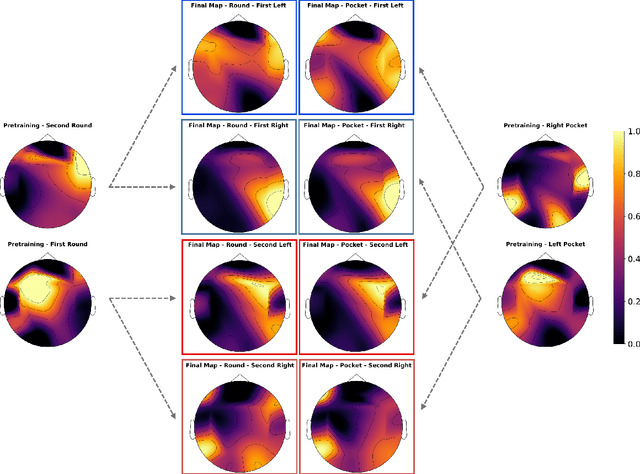Federico Nardi
Università di Padova dipartimento di Fisica e Astronomia, Italy, Laboratoire de Physique Clermont Auvergne, France
Neuromorphic Readout for Hadron Calorimeters
Feb 18, 2025Abstract:We simulate hadrons impinging on a homogeneous lead-tungstate (PbWO4) calorimeter to investigate how the resulting light yield and its temporal structure, as detected by an array of light-sensitive sensors, can be processed by a neuromorphic computing system. Our model encodes temporal photon distributions as spike trains and employs a fully connected spiking neural network to estimate the total deposited energy, as well as the position and spatial distribution of the light emissions within the sensitive material. The extracted primitives offer valuable topological information about the shower development in the material, achieved without requiring a segmentation of the active medium. A potential nanophotonic implementation using III-V semiconductor nanowires is discussed. It can be both fast and energy efficient.
Graph Neural Networks Uncover Geometric Neural Representations in Reinforcement-Based Motor Learning
Oct 31, 2024



Abstract:Graph Neural Networks (GNN) can capture the geometric properties of neural representations in EEG data. Here we utilise those to study how reinforcement-based motor learning affects neural activity patterns during motor planning, leveraging the inherent graph structure of EEG channels to capture the spatial relationships in brain activity. By exploiting task-specific symmetries, we define different pretraining strategies that not only improve model performance across all participant groups but also validate the robustness of the geometric representations. Explainability analysis based on the graph structures reveals consistent group-specific neural signatures that persist across pretraining conditions, suggesting stable geometric structures in the neural representations associated with motor learning and feedback processing. These geometric patterns exhibit partial invariance to certain task space transformations, indicating symmetries that enable generalisation across conditions while maintaining specificity to individual learning strategies. This work demonstrates how GNNs can uncover the effects of previous outcomes on motor planning, in a complex real-world task, providing insights into the geometric principles governing neural representations. Our experimental design bridges the gap between controlled experiments and ecologically valid scenarios, offering new insights into the organisation of neural representations during naturalistic motor learning, which may open avenues for exploring fundamental principles governing brain activity in complex tasks.
TomOpt: Differential optimisation for task- and constraint-aware design of particle detectors in the context of muon tomography
Sep 25, 2023Abstract:We describe a software package, TomOpt, developed to optimise the geometrical layout and specifications of detectors designed for tomography by scattering of cosmic-ray muons. The software exploits differentiable programming for the modeling of muon interactions with detectors and scanned volumes, the inference of volume properties, and the optimisation cycle performing the loss minimisation. In doing so, we provide the first demonstration of end-to-end-differentiable and inference-aware optimisation of particle physics instruments. We study the performance of the software on a relevant benchmark scenarios and discuss its potential applications.
 Add to Chrome
Add to Chrome Add to Firefox
Add to Firefox Add to Edge
Add to Edge